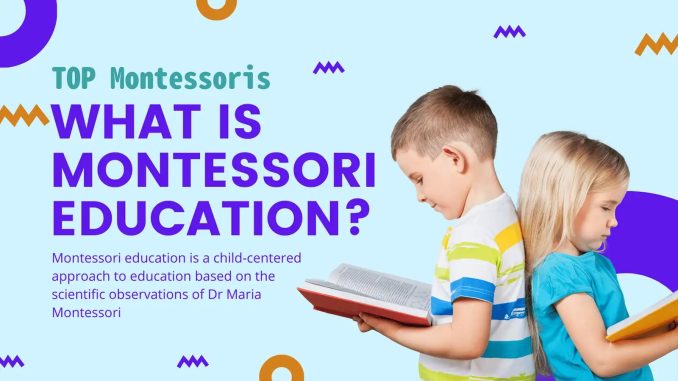
The Montessori Method, developed by Dr. Maria Montessori in the early twentieth century, represents both a philosophy and a practical approach to education that has influenced classrooms around the globe. Born out of rigorous observation and scientific study of children, Montessori’s vision was to create environments where young learners could flourish through their own curiosity and intrinsic motivation. More than a century later, the core tenets of her method—respect for the child, hands‑on learning, and thoughtfully prepared environments—remain remarkably relevant, offering insights for educators, parents, and even business leaders seeking to cultivate innovation and autonomy.
Central to the Montessori Method is the idea that children learn best when they are given freedom within boundaries. In a Montessori classroom, furniture and materials are sized to the child, and books, puzzles, and manipulatives are arranged on low shelves so that each learner can choose activities independently. This sense of agency—the ability to decide what to work on, for how long, and at what pace—recognizes that each child’s developmental timeline is unique. Rather than rushing students along a one‑size‑fits‑all curriculum, Montessori teachers observe closely, offering guidance only when necessary and stepping back to allow the learner to take ownership of the process.
This ownership is amplified by the use of specialized learning materials designed to isolate discrete concepts. A set of colored cylinders, for instance, helps children grasp dimensions of size and shape by touching, stacking, and comparing. Sandpaper letters engage tactile and visual pathways simultaneously, embedding the shapes and sounds of the alphabet in muscle memory. These materials are not mere educational toys; they embody a deep understanding of cognitive development. By making abstract ideas concrete, they enable learners to build internal mental frameworks that can be applied to more advanced studies later on.
Mixed‑age classrooms are another hallmark of the Montessori environment. Children typically span three-year age ranges, allowing younger learners to observe and emulate their older peers, while more experienced students reinforce their own understanding by teaching concepts they have already mastered. This natural ebb and flow of peer learning fosters a collaborative culture in which knowledge is shared rather than hoarded. In business parlance, it resembles mentoring models where seasoned employees guide newcomers, breaking down hierarchical barriers and reinforcing a collective sense of purpose.
Quiet focus is valued as much as collaboration. A typical Montessori classroom hums with concentration. Children move freely, selecting and returning materials, yet they do so with intentional care. This atmosphere emerges from clear expectations and the understanding that learning is both personal and communal. When a child spills water during a practical life exercise—such as washing dishes at a child‑sized sink—they are encouraged to tidy up themselves, building responsibility and respect for the shared environment. In this way, character development and academic learning go hand in hand.
The role of the teacher in Montessori settings diverges sharply from that of the traditional instructor. Rather than delivering lectures or directing every activity, the Montessori guide carefully observes the class, assessing individual interests and readiness. They introduce new lessons one‑on‑one or in small groups, demonstrating materials and then withdrawing to let the child engage independently. This model places a premium on listening, patience, and adaptability. Teachers become facilitators of discovery rather than purveyors of information—an approach that aligns with modern leadership theories emphasizing servant leadership and empowerment.
Time management is also treated differently. Montessori classrooms often offer multi‑hour work cycles, a continuous block of time during which children immerse themselves in chosen tasks without interruption. This extended focus counters the fragmented attention spans fostered by rigid schedules of short periods. By valuing depth over breadth, students learn to sustain concentration, practice persistence, and experience the satisfaction of completing self‑directed projects. In business settings, similar uninterrupted “deep work” blocks have been shown to increase creativity and productivity, suggesting that Montessori’s insights have applications far beyond the classroom.
Assessment in Montessori education shifts away from high‑stakes testing toward ongoing observation and documentation. Teachers maintain detailed records of each child’s work, noting progress, challenges, and emerging interests. These observations inform individualized learning plans and parent‑teacher discussions. The absence of grades and pressure‑filled exams reduces anxiety and allows children to take intellectual risks, exploring topics without fear of failure. For organizations, this approach parallels continuous feedback cultures where performance reviews are replaced by regular check‑ins and personalized development plans.
Critics sometimes question whether the Montessori Method can prepare students for standardized systems later in life. Yet research indicates that Montessori‑educated children often excel not only in academic measures but also in creativity, collaboration, and social-emotional skills. Their comfort with autonomy and intrinsic motivation can give them an edge in higher education and the workplace, where self‑direction and adaptability are increasingly prized.
Implementing Montessori principles in non‑Montessori contexts can also yield benefits. Schools that lack full accreditation can still incorporate elements such as child‑centered projects, mixed‑age groupings, or hands‑on materials to foster engagement. Businesses can draw on Montessori’s emphasis on prepared environments by designing workspaces that support autonomy—quiet zones for focused work, collaborative areas for team brainstorming, and accessible resources that enable employees to learn at their own pace.
In essence, the Montessori Method offers a blueprint for nurturing lifelong learners who approach challenges with curiosity, persistence, and confidence. By respecting the individuality of each learner, leveraging tactile and experiential tools, and cultivating environments of trust and autonomy, Montessori’s legacy transcends its origins in early childhood education. It presents a holistic framework for any setting—in classrooms, boardrooms, or innovation labs—where the goal is to unlock human potential through thoughtful design and genuine respect for individual growth.